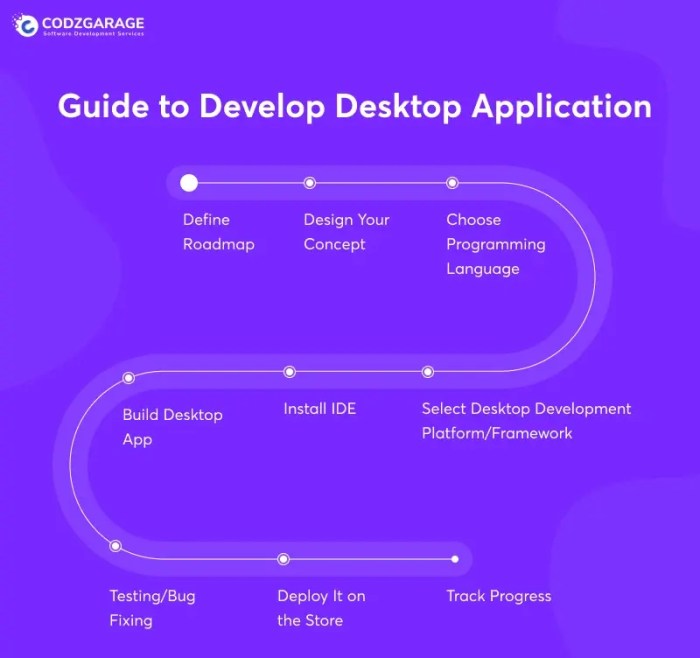Nearshore software development for desktop apps – The development of desktop applications has seen a significant shift in recent years, with businesses increasingly outsourcing development to leverage cost-effectiveness and access a wider talent pool. Nearshore software development, in particular, has emerged as a compelling option, offering a blend of geographical proximity, cultural understanding, and cost advantages compared to offshore outsourcing. This comprehensive guide explores the nuances of nearshore software development for desktop applications, delving into its benefits, challenges, and best practices.
Understanding Nearshore Software Development: Nearshore Software Development For Desktop Apps
Nearshore software development refers to outsourcing software development projects to a country geographically close to your own. This contrasts with offshore outsourcing, where development is handled in a geographically distant location, and onshore outsourcing, where development is done within the same country. The “near” aspect typically implies a similar time zone and often shared cultural values, reducing communication barriers and fostering smoother collaboration.
Advantages of Nearshore Desktop App Development, Nearshore software development for desktop apps
- Reduced Time Zones Differences: Facilitates real-time communication and collaboration, minimizing delays and misunderstandings.
- Cultural Understanding: Shared cultural values and business practices often lead to improved project management and better client-developer relationships.
- Cost-Effectiveness: While not as inexpensive as offshore outsourcing, nearshore development still offers significant cost savings compared to in-house development.
- Improved Communication: Easier and more frequent communication leads to better project transparency and faster problem resolution. This is particularly important for complex desktop applications.
- Easier Travel and On-Site Collaboration: Physical proximity allows for easier travel for meetings and on-site collaboration when needed.
- Access to Specialized Talent: Many nearshore locations boast a skilled and growing workforce specialized in desktop application development, including expertise in various technologies like .NET, Java, C++, and cross-platform frameworks like Electron and Qt.
Choosing the Right Nearshore Location
Selecting the appropriate nearshore location is crucial. Factors to consider include:
- Technical Skills and Expertise: Research the specific technological skills and experience available in potential locations.
- Language Proficiency: Ensure effective communication by considering the language spoken in the target location.
- Time Zone Alignment: Minimize time zone differences to optimize collaboration and communication.
- Cost of Development: Compare development costs across different nearshore locations to find the most cost-effective option without compromising quality.
- Legal and Regulatory Framework: Understand the legal and regulatory environment related to software development and intellectual property protection in the chosen location.
- Infrastructure and Technology: Assess the availability of reliable internet connectivity and modern development infrastructure.
Technologies Used in Nearshore Desktop App Development
Nearshore developers typically work with a range of technologies depending on project requirements. Some popular choices include:

Source: imimg.com
- .NET Framework/Core: A robust framework for building Windows desktop applications.
- Java: A platform-independent language suitable for cross-platform desktop applications.
- C++: A powerful language often used for high-performance desktop applications.
- Electron: A framework for building cross-platform desktop applications using web technologies (HTML, CSS, JavaScript).
- Qt: A cross-platform application and UI framework.
- Swift/Objective-C (macOS): Languages used for developing macOS desktop applications.
- Kotlin/Java (Android): For Android desktop application development.
Challenges of Nearshore Desktop App Development
While nearshore development offers many advantages, it’s essential to acknowledge potential challenges:
- Communication Barriers: Despite geographical proximity, language and cultural differences can still create communication hurdles.
- Intellectual Property Protection: Ensuring the security and protection of intellectual property is crucial and requires careful contract negotiation.
- Time Zone Differences (Minor): Even with proximity, minor time zone differences can still impact real-time collaboration.
- Finding the Right Partner: Thorough due diligence is essential to find a reliable and skilled nearshore development partner.
- Managing Expectations: Clear communication and well-defined expectations are vital to avoid misunderstandings and delays.
Best Practices for Nearshore Desktop App Development
To maximize the benefits of nearshore development, consider these best practices:
- Detailed Project Documentation: Provide comprehensive documentation to ensure clear understanding of project requirements.
- Regular Communication: Establish regular communication channels (e.g., daily stand-up meetings, weekly progress reports).
- Agile Development Methodology: Employ agile methodologies for iterative development and improved flexibility.
- Strong Contractual Agreements: Develop detailed contracts that clearly define responsibilities, intellectual property rights, and payment terms.
- Cultural Sensitivity: Demonstrate cultural sensitivity and respect for the nearshore team’s work style and practices.
- Regular Quality Assurance: Implement robust quality assurance processes throughout the development lifecycle.
Frequently Asked Questions (FAQ)
Q: What is the difference between nearshore and offshore development?
A: Nearshore development involves outsourcing to a geographically closer country, often within the same time zone or with minimal time difference, while offshore development involves outsourcing to a geographically distant country.
Q: Is nearshore development more expensive than offshore development?
A: Generally, yes, nearshore development is more expensive than offshore development but significantly less expensive than onshore development. The higher cost is often offset by improved communication, collaboration, and potentially higher quality.
Q: How can I find a reliable nearshore development partner?
A: Thorough research is key. Look for companies with a proven track record, positive client reviews, and expertise in the required technologies. Consider requesting references and conducting interviews before making a decision.
Q: What are the key factors to consider when choosing a nearshore location?
A: Consider factors such as technological expertise, language proficiency, time zone alignment, cost of development, legal and regulatory framework, and infrastructure.
Q: What are the risks associated with nearshore development?
A: Potential risks include communication barriers, intellectual property protection concerns, and the challenge of finding a reliable partner. Mitigation strategies involve clear communication, strong contractual agreements, and thorough due diligence.
Conclusion
Nearshore software development presents a compelling solution for businesses seeking to develop high-quality desktop applications cost-effectively. By carefully considering the advantages, challenges, and best practices Artikeld in this guide, businesses can leverage the benefits of nearshore development to achieve their software development goals efficiently and successfully. The key to success lies in selecting the right partner, establishing clear communication channels, and implementing robust project management strategies.

Source: codzgarage.com
References
While specific articles on nearshore desktop app development are limited, general resources on nearshore outsourcing and software development best practices are readily available. Search reputable sources like Gartner, Forrester, and industry publications for in-depth analysis and reports.
Call to Action
Ready to explore the potential of nearshore software development for your next desktop application project? Contact us today for a free consultation and let’s discuss how we can help you achieve your goals.
FAQ Corner
What are the key benefits of nearshore development compared to offshoring?
Nearshoring offers improved communication, reduced time zone differences, easier collaboration, and often a more similar cultural understanding, leading to faster project completion and fewer misunderstandings.
How does nearshore development impact project timelines?
The improved communication and collaboration typically associated with nearshore development often result in faster project timelines and quicker response to change requests.
What factors should I consider when choosing a nearshore development partner?
Consider factors such as the partner’s experience, expertise in your specific technology stack, communication capabilities, security protocols, and overall cultural fit.
What are the typical costs associated with nearshore development?
Costs vary depending on location, developer experience, and project scope. Generally, nearshore development offers cost savings compared to onshore development while being more expensive than offshoring.
How can I ensure the quality of the software developed nearshore?
Establish clear communication channels, utilize robust testing methodologies, and maintain regular communication with the development team throughout the project lifecycle.
